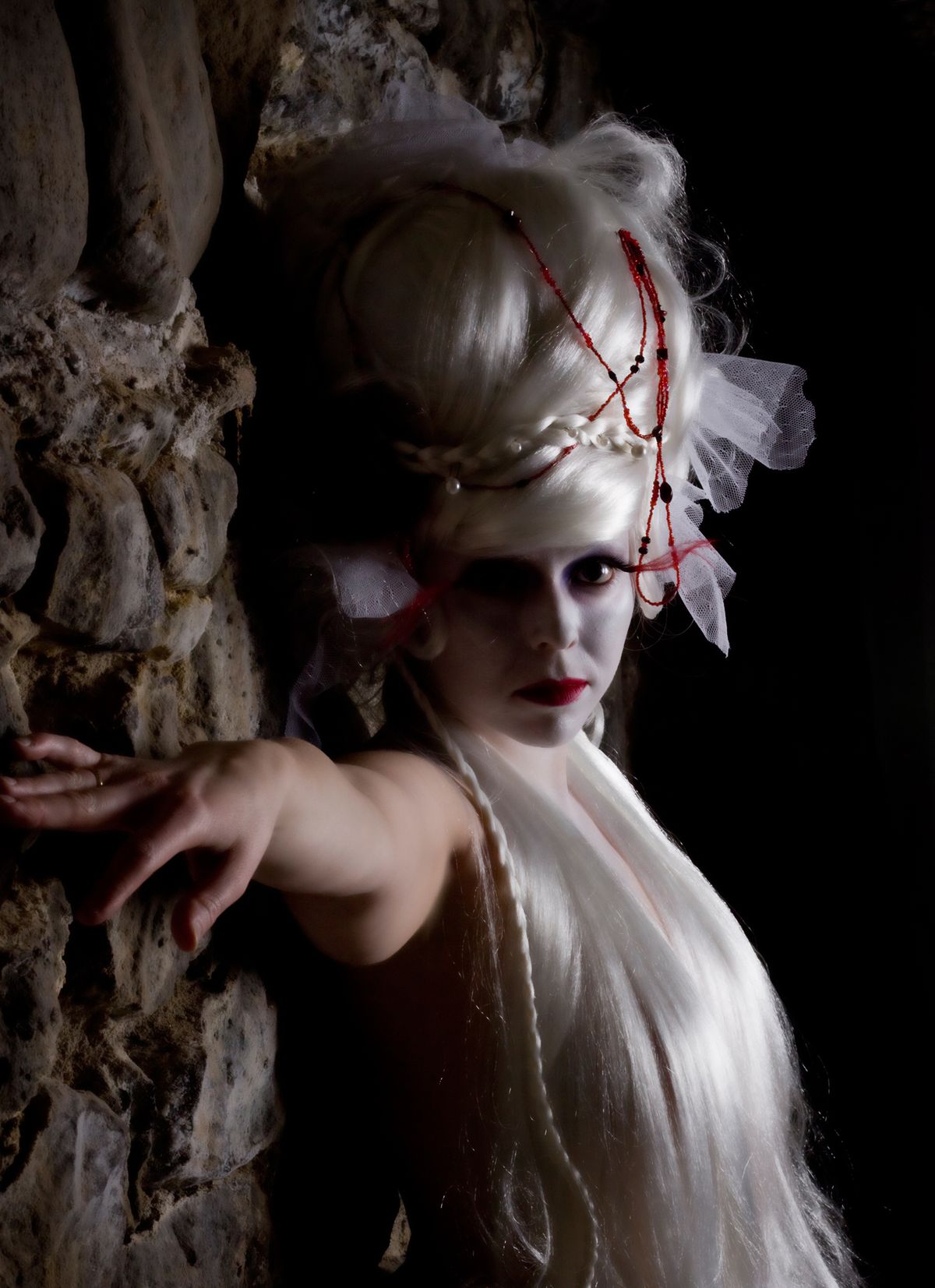On the Wall Jennifer Zurlini
Elaborate focus on fashion photography

When you think of digital age fashion photography, you quickly conjure up beautiful women digitally enhanced to the hilt, post-perfected until every freckle and pore of character is concealed and they become an unbelievable ideal.
In “Fusion: An Artistic Collaboration Between Hair, Makeup, Clothing and Photography,” photographer Carl Richardson uses his Canon EOS 50D to authenticate reality – a contrast to the fantastic visions he and his crew have fabricated.
Richardson’s methodology, craftsmanship and handling of composition, lighting and depth of field invite the viewer to focus on the fine art of fashion photography rather than the deception.
“I didn’t want to go in and make the picture something other than it was when I took it,” said Richardson. “My process was really slow; where I was framing the picture, I took in the camera so that I didn’t have to do a lot of cropping or a lot of editing after. So, yeah, it was very purposeful.”
The giclee prints on canvas are on display at The Schade Towers through May.
Many talents have melded to make this show vibrant. “Fusion” first ignited from text messages between Richardson, an art instructor at Spokane Falls Community College, and Tera Bailey, a hair designer at Perala’s Hair Design in The Schade Towers.
After many texts, e-mails and voicemails, the collaborative vision became a seven-month reality. The two artists met every other Saturday with makeup artists Shannon Lasater, Janelle Jackson, and Carolina Nowak (Bailey did makeup as well); clothing designer Lexi Carr; and local models from an Internet modeling agency.
Half of the models were not from the casting call, but were friends or clients of the artists.
In a profusion of false eyelashes, hair extensions, mounds of makeup and teased manes, 20 of Spokane’s most exotic and gorgeous women portray an array of artistic styles from tribal to gothic, vamp to Victorian, poetic to circus, Old Hollywood glam to ’60s housewife and ’70s rock star.
“That was one thing I tried to tell the models: Instead of posing, try to take on the personality of the look we’ve given you,” said Richardson, who wears black dreadlocks down to his hips (he’s been growing them out for 19 years).
“We were just trying to go as over the top as possible,” he said. “Like I told Tera, I don’t want these looks to be something you could go out and wear that night; I want them to be pushed over the top. I want them to be, you know, something silly, something fun, something sexy, and just a wide variety.”
Bailey created and styled all of the hair.
“Carl does all of the photography work, and I do kind of the look,” she said during last Friday’s crowded opening reception, while describing the style she created for an untitled image (shown on page C1).
“It’s many different hair pieces,” said Bailey. “There’s actually a paper towel roll (wrapped inside) that I kind of cut and leave all the paper. That way I could pull all the hair through it and out.”
She then built the hair up with about 10 long, white hair extensions.
“(The style) is probably a combination of almost circus, with the makeup really white out and the red lips, and Victorian with the hair and the lace. Her look was pulled together. I had a vision, but until you get in there and start working with the hair, you never know how it’s going to turn out.”
Richardson’s untitled portrait of Lexi Carr – hanging inside Perala’s salon, down the hallway from the main exhibition area – captures the essence of the 17-year-old fashion artist who worked behind the scenes on the “Fusion” photo shoots.
Carr’s shoot took place between passing trains on the railroad tracks behind Perala’s. Bailey added long, red hair extensions to Carr’s golden crown.
A junior at Lewis and Clark High School, Carr, who learned sewing skills from her grandmother, designed clothing for several of the works in the exhibition.
For her portrait, Carr made a petticoat, overskirt and corset from fabric and plastic boning she had on hand, creating a look that is a blend of influences. Her skirt was made from bed sheets with safety pins to cinch the fabric.
“It came from goth and steam punk, mostly. It’s my favorite style,” she said. “It’s like gothic but with a lot of Victorian and industrial influences.”
For another model’s photograph – the only model featured twice in the 21 images that comprise “Fusion” – Carr designed and sewed a black satin dress that skirted striped stockings.
“We were doing like a Lolita influence, which is like a Japanese style where you dress up like a porcelain doll, basically,” said Carr.
Richardson and Bailey placed the model on a bright orange, synthetic monster fur rug. Richardson said he directed her to “just lay down like a doll that’s broken.”
With so much playfulness, it works.